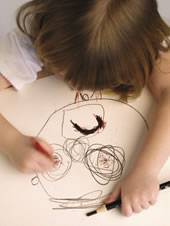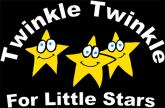
Publisher:
Bonnie King
CONTACT:
Newsroom@Salem-news.com
Advertising:
Adsales@Salem-news.com

~Truth~
~Justice~
~Peace~
TJP
Aug-05-2006 19:25

 TweetFollow @OregonNews
TweetFollow @OregonNews
BLUEPRINT for YOUTH: Nuances for our Next Generation
By: Barry Lee Coyne, MSW
 Photos courtesy: mental-health-abuse.org, silvermark.com, barnardos.org.uk, angelsinnight.org, geocities.com/msjohnniem, robynsnest.com |
(SALEM) - LIVING LIFE involves exposure to stress. How each of us deals with such stress relates to our degree of mental health.
 We have a dichotomy of references - Eugenics and Euthenics - both derived from Greek roots. Eugenics stems from inborn factors based on breeding, namely the genes passed on from parent to child. Euthenics, on the other hand, flows from the impact of the external environment on the individual. Together they form a curious partnership that shapes our personality and behavior.
We have a dichotomy of references - Eugenics and Euthenics - both derived from Greek roots. Eugenics stems from inborn factors based on breeding, namely the genes passed on from parent to child. Euthenics, on the other hand, flows from the impact of the external environment on the individual. Together they form a curious partnership that shapes our personality and behavior.
Personality factors begin while we are still in the womb, since the genes have already begun to weave the human fabric.
However, external factors still manage to intrude even before the placenta sees the light. Nutrition impacts growth, and thus the mother's intake can affect the outcome. Blood circulation between mother and child can determine if the newborn inherits the consequences of drug addiction or even the HIV virus. Birth defects can inflict lifelong scars on self-image and the capacity to master the environment.
 Once the child is born and the umbilical cord cut, maternal dependency takes center stage. At that point, according to clinician Edna Jacobson, all is symbiosis. The infant cannot distinguish between himself and the mother -- the universe is one.
Once the child is born and the umbilical cord cut, maternal dependency takes center stage. At that point, according to clinician Edna Jacobson, all is symbiosis. The infant cannot distinguish between himself and the mother -- the universe is one.
As the months roll by, the infant goes through separation-individuation, then the stage when the mother becomes another person.
 When mother leaves, the baby cries, responding to the fears of abandonment. Perhaps this is the first mental health issue to appear. Later life, with its many abrupt changes and sudden losses, can sometimes trigger subconscious memories of early losses and the associated anxieties. Yesterday's pain can induce today's problems, whether feeling alienated from schoolmates or abandoned through divorce.
When mother leaves, the baby cries, responding to the fears of abandonment. Perhaps this is the first mental health issue to appear. Later life, with its many abrupt changes and sudden losses, can sometimes trigger subconscious memories of early losses and the associated anxieties. Yesterday's pain can induce today's problems, whether feeling alienated from schoolmates or abandoned through divorce.
 Schools traditionally have relied on psychologists and social workers to help bridge the voids in family cohesiveness and with isolation from peers. Our efforts to develop solutions may well be paved with gold but our messages can sound as hollow as tin. Older people often have much more experience from which to draw guidance, but ours is not a consistently logical world.
Schools traditionally have relied on psychologists and social workers to help bridge the voids in family cohesiveness and with isolation from peers. Our efforts to develop solutions may well be paved with gold but our messages can sound as hollow as tin. Older people often have much more experience from which to draw guidance, but ours is not a consistently logical world.
Those of us who would appear as divinities from Mt. Olympus cannot possibly hope to convey a credible message to our youth. To them, we seem like a two-faced Janus.
There is a not-so-ancient psychological concept to begin from where the client is, and to move onward from that point. This especially applies to doing outreach to our pediatric generation. We must sense their vulnerability and shun our pedestal of authority. If they feel hurt, let us validate that pain. Let our children be aware that we are their sensitive allies in the struggles of growing up. Within that framework, let us find new approaches.
 Artwork represents such a vehicle. Art therapists encourage the young person to depict feelings on paper, not only for catharsis but for what cannot be verbalized. Conversely, youngsters are consumers of art in the form of cartoons and comic strips. If handled properly, mental health themes can be communicated in cartoon form with characters to depict feelings ranging from temper tantrums to depression and withdrawal.
Artwork represents such a vehicle. Art therapists encourage the young person to depict feelings on paper, not only for catharsis but for what cannot be verbalized. Conversely, youngsters are consumers of art in the form of cartoons and comic strips. If handled properly, mental health themes can be communicated in cartoon form with characters to depict feelings ranging from temper tantrums to depression and withdrawal.
Behavior issues ranging from graffiti to kleptomania to warding off pedophiles are within the realm of exploration. Whether those cartoon faces are animals or children, the imperative is that our young audience must relate to the plot we are portraying.
Music is yet another avenue to venture into.
 Take any popular song from "Twinkle Twinkle, Little Star" to "Jingle Bells" and rewrite the lyrics to some-thing captivating and catchy. Teach the words, and guide your youngsters most in need of being converted to better behavior to act as choral leaders. There is nothing like subliminal propaganda, and if the TV commercials can use it for commercials, why not encompass this as an acceptable means to communicate mental health values?
Take any popular song from "Twinkle Twinkle, Little Star" to "Jingle Bells" and rewrite the lyrics to some-thing captivating and catchy. Teach the words, and guide your youngsters most in need of being converted to better behavior to act as choral leaders. There is nothing like subliminal propaganda, and if the TV commercials can use it for commercials, why not encompass this as an acceptable means to communicate mental health values?
Toys Can Teach
For the toddlers, play dolls and toy soldiers remain objects of fascination. Taking a page from that book leads us to appreciate how doll dynamics permit yet another approach to convey behavior as well as human attitudes. In our increasingly multicultural society, ethnic dolls can exert strong influences on children, and anatomically correct dolls have been deployed to situation of sex abuse among our young. They have often shown themselves to be less intimidating than have a conversation with an adult.
 Taking this theme one step further, we can easily justify the use of puppet theatre to develop better mental health at that very stage of life when our value systems receive their basic foundation. Most youngsters also enjoy doing puzzles. It is no accident that life itself is a compendium of puzzles, changing focus like a kid's kaleidoscope. Let us encourage game inventors to develop jigsaw puzzles which depict the triumph of good over evil. That message must be reinforced.
Taking this theme one step further, we can easily justify the use of puppet theatre to develop better mental health at that very stage of life when our value systems receive their basic foundation. Most youngsters also enjoy doing puzzles. It is no accident that life itself is a compendium of puzzles, changing focus like a kid's kaleidoscope. Let us encourage game inventors to develop jigsaw puzzles which depict the triumph of good over evil. That message must be reinforced.
 Maybe one day, someone can re-invent the pieces on a chess or checker-board to demonstrate the modern-day characters in the serendipity game of being human. Board games that have pathways and pitfalls can add a new dimension to the many morality tales like Pinocchio or Cinderella or Sleeping Beauty.
Maybe one day, someone can re-invent the pieces on a chess or checker-board to demonstrate the modern-day characters in the serendipity game of being human. Board games that have pathways and pitfalls can add a new dimension to the many morality tales like Pinocchio or Cinderella or Sleeping Beauty.
With the video explosion in our contemporary era, violence and sex are glamorized to create a counter-culture for would-be predators. Antisocial behavior--stripped to its essence--constitutes a mental health menace. It falls on our shoulders, those of teachers and social workers and parents themselves, to conduct a crusade to expand the scope of progressive, proactive ideas which point that Next Generation to making psychologically sound decisions. The time is ripe and the hour is right.
-------------------------------------------------------------------------------------------------------------------------------------------
NOTE: B. Lee Coyne has been a psychiatric social worker since the mid-70's, beginning in Queens, N.Y. He recently founded The Coping Clinic in West Salem, OR, and can be emailed at luckycoyne@ yahoo.com.
Articles for August 4, 2006 | Articles for August 5, 2006 | Articles for August 6, 2006
Quick Links
DINING
Willamette UniversityGoudy Commons Cafe
Dine on the Queen
Willamette Queen Sternwheeler
MUST SEE SALEM
Oregon Capitol ToursCapitol History Gateway
Willamette River Ride
Willamette Queen Sternwheeler
Historic Home Tours:
Deepwood Museum
The Bush House
Gaiety Hollow Garden
AUCTIONS - APPRAISALS
Auction Masters & AppraisalsCONSTRUCTION SERVICES
Roofing and ContractingSheridan, Ore.
ONLINE SHOPPING
Special Occasion DressesAdvertise with Salem-News
Contact:AdSales@Salem-News.com

googlec507860f6901db00.html



Terms of Service | Privacy Policy
Comments are Closed on this story.
[Return to Top]
©2025 Salem-News.com. All opinions expressed in this article are those of the author and do not necessarily reflect those of Salem-News.com.